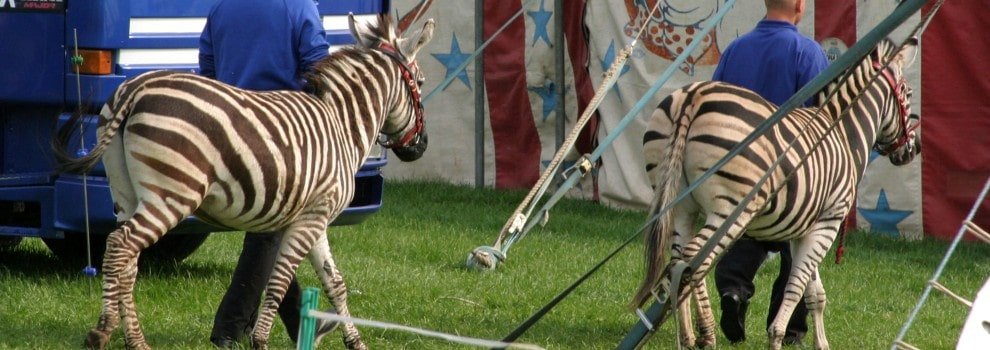- Find a Pet
- Advice and Welfare
- Ways to Give
- Get Involved
- What We Do
- Search
- My RSPCA
- Report a concern
- Sponsor
-
Colour modeVivid Calm
- Home
- Advice and welfare
- Wildlife
- Wildlife in captivity
- Wild animals in circuses
Wild animals in circuses
We don't believe animals should be subjected to the conditions of circus life. This is because of the constant travelling, the cramped transport, the small temporary housing, forced training and performance. The loud noises and crowds of people are often upsetting or frightening for performing animals.

Circus life for animals
Circus life impacts negatively on animal welfare. Captive animals can't behave, socialise or get enough exercise as they would in the wild. Many animals develop behavioural and/or health problems as a direct result of the captive life that they're forced to lead.
A recent report commissioned by the Welsh Government concluded that "Life for wild animals in travelling circuses - doesn't appear to constitute either a 'good life' or a 'life worth living'".
Do circuses still use animals?
From January 2020 in England, the use of wild animals in circuses is banned under the Wild Animals in Circuses Act 2019. When the current licence expired, the ban was put into effect.
The Wild Animals and Circuses (Wales) Bill came into force on 1 December 2020. This means it's now an offence to use wild animals in travelling circuses - whether through performance or exhibition.
Where do wild circus animals come from?
Wild circus animals are usually captive-bred, but this doesn't mean that they're tame. It takes thousands of years for animals to become domesticated. The wild animals used to perform in circuses have the same needs as they would in the wild. These needs simply can't be met in a travelling circus environment.
Where do wild circus animals live?
When on tour:
- Animals such as camels will spend their time in animal tents, in fenced-off areas or tethered to graze.
- Big cats or other larger wild animals are confined to 'beast wagons' or chained in trucks.
- Circus animals are only performing in front of a crowd for about 1% of the day, before returning to their cramped living conditions.
Follow the links below to learn more about the welfare of wild animals in captivity.



